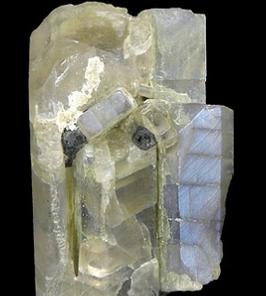Anorthoclase: Gemstone Information
K-analbite, K-monoalbite, K-albite (also see larvikite). Anorthoclase is the name given to a member of the alkali feldspar series that contains more than two-thirds sodium and has triclinic symmetry. Anorthoclase sometimes shows twinning, but generally not the multiple twinning seen in plagioclase.
Occurrence
As phenocrysts in high-temperature volcanic rocks such as trachytes, phonolites and andesites and in tuffs. Rather abundant worldwide. Some localities for well-characterized material include: Pantelleria and Ustica Islands, Italy; Larvik, Norway; Berkum, North Rhine-Westphalia, Germany; Kilju, Hamgyongbukto, Democratic People’s Republic of Korea; Mt. Erebus, Ross Island, Antartica; Camargo, Chihuahua, Mexico; Stettin, Marathon Co., Wisconsin, USA; Somali Republic; Australia and New Zealand.
Appearance
Opaque to translucent , rarely transparent
• Luster: Vitreous, may be pearly on cleavages
• Color: Colorless, also white, pale creamy yellow, occasionally greenish or pink, red.





